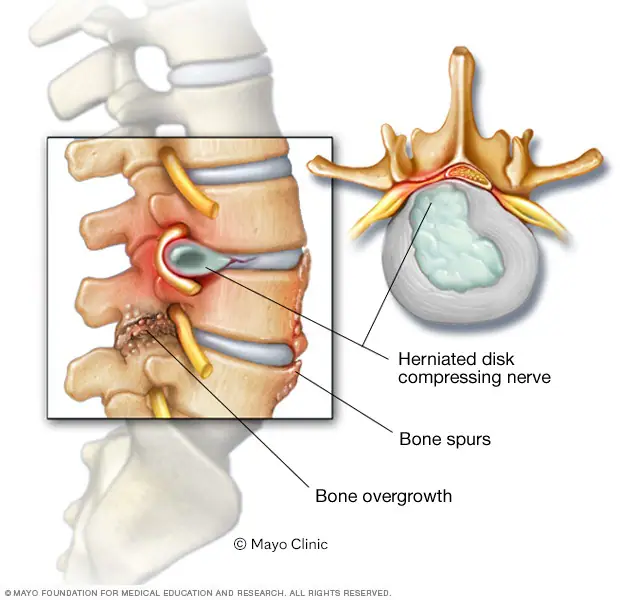Spinal stenosis is a condition characterized by the narrowing of the spaces within the spine, which can put pressure on the nerves that travel through them. This narrowing can occur in the central spinal canal, where the spinal cord is located, or in the foramina, the small openings on the sides of the vertebrae where nerve roots exit. The condition is most common in the neck (cervical stenosis) and the lower back (lumbar stenosis).

Spinal Stenosis
Overview
Causes
The primary cause of spinal stenosis is often age-related, but it can also be congenital (present from birth) or a result of other conditions. The most common causes include:
Common causes include:
- Osteoarthritis: The wear-and-tear of cartilage and bones in the spine can lead to the formation of bone spurs (osteophytes), which can grow into the spinal canal or foramina and press on nerves.
- Herniated discs: When the soft inner material of a spinal disc bulges or ruptures, it can put pressure on the spinal cord or a nerve root.
- Spinal instability: When a vertebra slips forward, the canal can narrow as a result of the bony arch compressing the nerves on the adjacent vertebra.
- Thickened ligaments: Ligaments, the fibrous cords that hold the vertebrae together, can thicken over time in response to micro-instability, encroaching on the spinal canal.
- Spinal tumors: Although rare, tumor growth within the spinal canal can cause stenosis.
Symptoms
The symptoms of spinal stenosis often develop gradually and may not be immediately noticeable. They vary depending on the location of the narrowing.
- Lumbar Stenosis: Symptoms in the lower back may include pain, numbness, tingling, or weakness in the legs or feet. A classic symptom is neurogenic claudication, where leg pain worsens with walking or standing and is relieved by sitting or leaning forward.
- Cervical Stenosis: Symptoms in the neck can affect the shoulders, arms, or hands. This may include numbness, weakness, or tingling. In severe cases, it can cause problems with balance, walking, and bowel or bladder function.
Non-Surgical Treatments
- Physical Therapy and Exercise: Strengthening neck and back muscles for stability; nerve gliding stretches to relieve nerve pressure.
- Lifestyle modifications: Maintaining a healthy weight and avoiding aggravating activities.
- Medications: Over-the-counter anti-inflammatory drugs (ibuprofen, naproxen). Stronger prescriptions may include nerve pain medications or short-term oral steroids.
- Injections: Steroid injections can sometimes provide temporary relief by reducing inflammation.
Surgical Treatment
Surgery is considered as a last resort when non-surgical options have failed and the patient is experiencing severe, debilitating pain or concerning neurologic deficits such as spinal cord compression and injury.